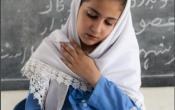Afghanistan
Operation: Afghanistan
Location
{"longitude":65,"latitude":34,"zoom_level":0}
Latest update of camps and office locations 21 Nov 2016. By clicking on the icons on the map, additional information is displayed.
Key Figures
| 2018 planning figures | |
| 60% | of returnees aged 15-24 will be enrolled in certified livelihoods training |
| 200,000 | returnees will receiving multipurpose cash grants |
| 30,100 | refugee and IDP households will receive core-relief items |
| 2016 end-year results | |
| 372,000 | refugee returnees received cash grants to help address their immediate humanitarian needs |
| 219,000 | individuals (refugee returnees, IDPs and host community) facing harsh winter conditions, received winterization assistance |
| 59,000 | people of concern benefited from community-based interventions |
| 5,000 | people with specific needs received assistance |
Latest Updates
Updates and additional information are available on UNHCR's Inter-Agency Information Sharing Portal.
People of Concern
33%
Increase in
2016
2016
| 2016 | 2,355,622 |
| 2015 | 1,767,291 |
| 2014 | 1,324,996 |

[["Refugees",59771],["Asylum-seekers",128],["IDPs",1797551],["Returned refugees",383951],["Others of concern",114221]]
Loading ...
Afghanistan
< Back
2016
{"categories":[2013,2014,2015,2016,2017,2018],"budget":[131.37522619,151.97085579,150.64388639,259.233864759,137.62688892,126.083597533],"expenditure":[63.92581611,64.25946191,70.35477096,197.82190746,null,null]}
{"categories":[2013,2014,2015,2016,2017,2018],"p1":[38.23178704,58.44455712,66.83857405,187.89448891,79.92368384,36.182664984],"p2":[null,null,null,null,null,null],"p3":[65.79076549,60.08470407,56.92509855,42.006523619,39.77442109,71.233540285],"p4":[27.35267366,33.4415946,26.88021379,29.33285223,17.92878399,18.667392264]}
{"categories":[2013,2014,2015,2016,2017,2018],"p1":[18.32759334,25.27108431,42.22418797,174.62465414,null,null],"p2":[null,null,null,null,null,null],"p3":[30.54190771,24.42136004,17.78314669,12.48364936,null,null],"p4":[15.05631506,14.56701756,10.3474363,10.71360396,null,null]}
Loading ...
CHOOSE A YEAR
- 2014
- 2015
- 2016
- 2017
- 2018
Year-end Overview
Working environment
Afghans remain the largest refugee population of concern to UNHCR in Asia. The volatile security situation in Afghanistan continues to drive displacement, with more than 200,000 people forced to flee their homes in the first eight months of 2017.
While over 370,000 Afghan refugees repatriated in 2016, the rate of return has steadied in 2017, with some 55,000 people having returned as of end October.
The ‘Solutions Strategy for Afghan refugees to support voluntary repatriation, sustainable reintegration and assistance to host countries’ (SSAR) remains the overarching framework for solutions to Afghan displacement.
UNHCR supports the Council of Ministers’ sub-Committee on Migration, the Minister for Return and Reintegration, and is also an active participant in the Government’s Displacement and Return Executive Committee (DiREC), which is designed to plan and respond to displacement within Afghanistan and to the reintegration of returnees.
Internal displacement in Afghanistan is expected to continue in 2018, reflecting the overall security situation in the country. UNHCR will continue to work with the authorities to ensure protection and durable solutions and to lead the inter-agency protection and shelter clusters.
In cooperation with the authorities, UNHCR will also pursue community-based, solutions-oriented interventions for the most vulnerable displaced families from Pakistan’s North Waziristan Agency.
Key priorities
Each Afghan refugee returnee is given $200 in one of the four encashment centers (in Herat, Jalalabad, Kabul and Kandahar) to meet immediate humanitarian needs and transport costs to place of origin or destination. Basic services, awareness and child protection, returnee monitoring and assistance to people with specific needs are also provided. UNHCR also conducts returnee monitoring upon arrival at the encashment centres, and carries out phone surveys and community surveys upon settling into communities.
Based on returnee monitoring findings, programmes are developed in close collaboration with development partners, to ensure sustainability of returns and to mitigate protection risks. This includes: building community centres for women and youth; income-generating activities and linking them to markets; promoting women’s participation in decision-making through women’s shuras committee; and training and job creation for youth, in partnership with the private sector.
UNHCR leads the Protection (including co-leadership of the Housing Land and Property Task Force) and the Emergency Shelter and Non-Food Items clusters, providing core relief items and emergency shelter assistance to vulnerable displaced people. UNHCR also distributes cash and in-kind winterization packages.
UNHCR leads the response to the vulnerable displaced families from Pakistan’s North Waziristan Agency, transiting from emergency to targeted assistance for people with specific needs and strengthening self-reliance and resilience for the overall caseload.
The Office collects, verifies and analyses information to collate evidence for advocacy efforts towards access to land and documentation, among others.
The organization will continue strengthening the link between humanitarian and development through partnerships with development actors and the private sector.






